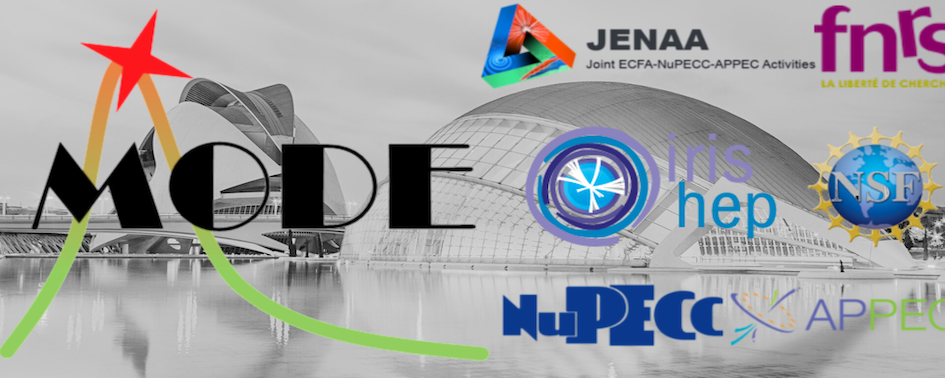Conveners
Astroparticle
- Roberto Ruiz De Austri
- Christian Glaser (Uppsala University)
Astroparticle
- Christian Glaser (Uppsala University)
- Roberto Ruiz De Austri
Astroparticle
- Roberto Ruiz De Austri
Detection of neutrinos at ultra-high energies (UHE, E >$10^{17}$eV) would open a new window to the most violent phenomena in our universe. However, owing to the expected small flux of UHE neutrinos, the detection rate will be small, with just a handful of events per year, even for large future facilities like the IceCube-Gen2 neutrino observatory at the South Pole.
In this contribution, we...
Cosmic muon interactions leading to the in-situ production of long-lived radioisotopes may introduce a significant background in the context of rare event searches conducted deep underground. Specifically, the delayed decay of $^{77(m)}$Ge emerges as the primary contributor from in-situ cosmogenic sources for the neutrinoless double-beta decay search with $^{76}$Ge. The future LEGEND-1000...
GENETIS aims to use AI to find optimal designs of instruments for greater science outcomes. Initially, we are using genetic algorithms to evolve optimal antenna designs for the detection of astrophysical neutrinos and is building a prototype of what is the first antenna evolved for a science outcome. The Nebulous spin-off project is building antenna designs from building blocks “LEGO”-style...
The fidelity of detector simulation is crucial for precision experiments, such as DUNE which uses liquid argon time projection chambers (LArTPCs). We can improve the detector simulation by performing dedicated calibration measurements. Using conventional calibration approaches, typically we are only able to tackle individual detector processes per measurement. However, the detector effects are...
The detection of high-energy astrophysical neutrinos by IceCube has opened a new window on our Universe. While IceCube has measured the flux of these neutrinos at energies up to several PeV, much remains to be discovered regarding their origin and nature. TAMBO is a next-generation neutrino observatory specifically designed to detect tau neutrinos in the 1-100 PeV energy range, enabling tests...
Understanding the nature of dark matter is one of the greatest challenges faced by Particle Physics in the XXI century. To date, the only hint about a positive identification of the dark matter comes from the DAMA/LIBRA experiment in the Gran Sasso National Laboratory (Italy). For more than 20 years, it has observed an annual modulation in the low-energy detection rate of its NaI(Tl) crystals,...
In this presentation, I will discuss the forward modeling of the DSA 2000 radio interferometer, an array set to exceed the capabilities of any existing or planned radio interferometer. Our approach leverages forward modeling to design and validate the system, ensuring it meets scientific requirements, budget constraints, and computational feasibility. I will introduce our JAX-based forward...
Information Field Theory (IFT) offers a powerful framework for the analysis of experimental data. The fundamental objective of IFT is the reconstruction of continuous fields from noisy and sparse data. By combining Bayesian probabilities with computational techniques from quantum field theory and statistical mechanics, IFT allows for efficient inference in high-dimensional problems.
In this...
The planned IceCube-Gen2 radio neutrino detector at the South Pole will enhance the detection of cosmic ultra-high-energy neutrinos. It is crucial to make use of the time available until its construction to optimize the detector design. A fully differentiable pipeline, from signal generation to detector response, would allow for the application of gradient descent techniques to explore the...
Deep learning algorithms have excelled in various domains. Despite this success, few deep-learning models have seen full end-to-end deployment in gravitational-wave searches, both in real-time and on archival data. In particular, there is a lack of standardized software tools for quick implementation and development of novel AI ideas. We address this gap by developing the ML4GW and HERMES...
Multi-dimensional parameter spaces are commonly encountered in astroparticle physics theories that attempt to capture novel phenomena. However, they often possess complicated posterior geometries that are expensive to traverse using techniques traditional to this community. Effectively sampling these spaces is crucial to bridge the gap between experiment and theory. Several innovations have...
